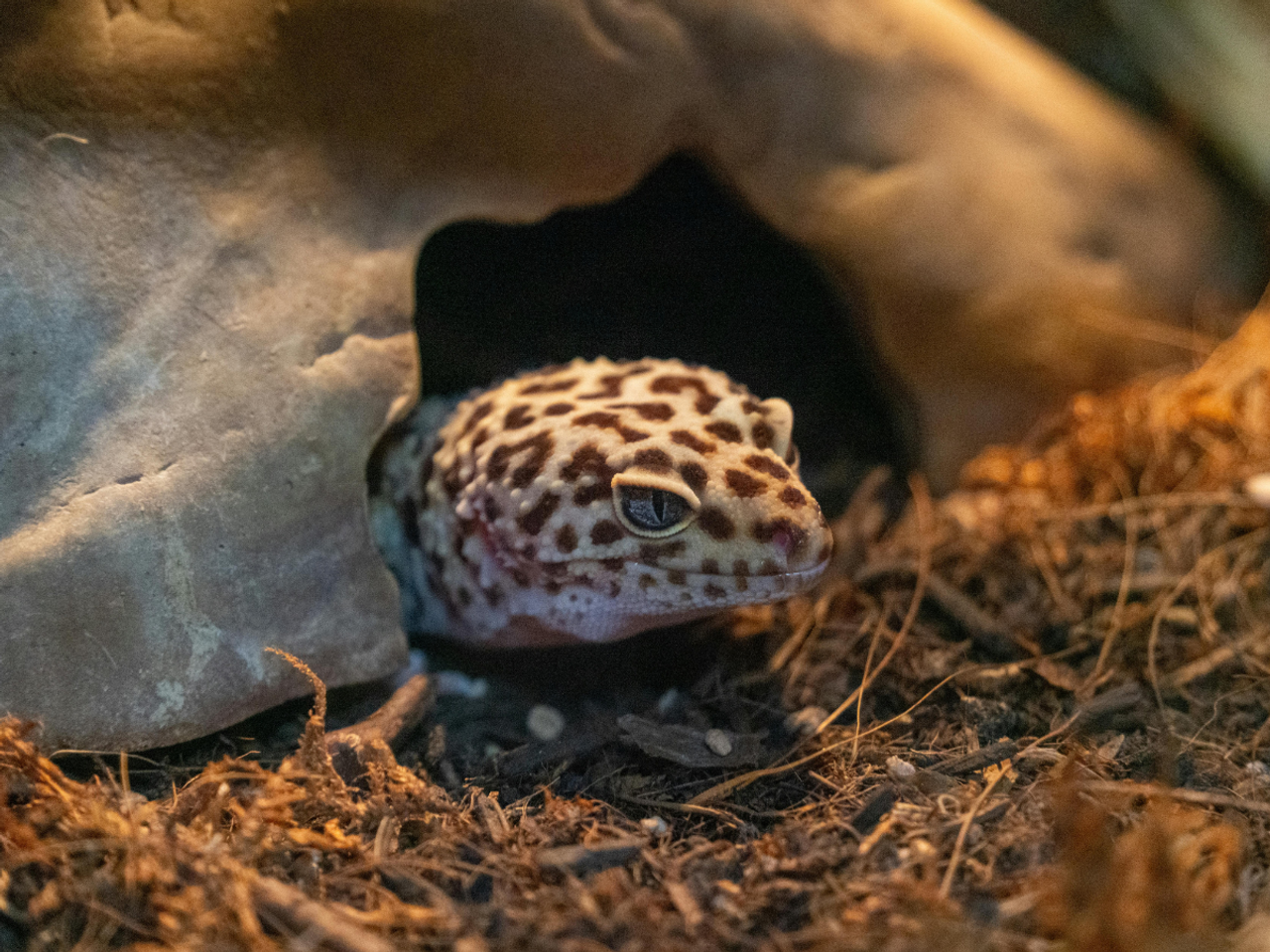Stepping Into Brumation: A Seasonal Guide for Reptile Keepers
Posted by Tori Vail on Oct 9th 2025
Brumation is not as scary of a word as it seems. In fact, it's way more natural than the way some keepers talk about it. Brumation is a natural process that certain species of reptiles undergo that is similar to hibernation in mammals. During brumation, these reptiles enter a phase of dormancy, usually in response to changes in temperature and light cycles. The importance of keeping your animal healthy during this stage will determine the health of your animal after. This stage of the season is also a large contributor to the breeding cycle. In the wild, this comes about because of seasonal changes that tend to have different sunlight cycles. Although not all reptiles go through this stage, being prepared to handle this change is important.
Understanding Your Species
Before diving into preparing for this change of the year, it's important to understand which species of reptile we're dealing with. Learning how to tend to your species of reptile will make the process much easier to follow. Each species will have a different process because of the environmental factors that need to be taken into preparation.
Recognizing Behavioral Changes
The most confusing part about determining if it is truly time for a reptile to go into brumation is going to be the change in behavior. Behavior is a big indicator for many different changes in an animal's life, but learning the key factors in the difference between each is how to determine what could be going on. Contact a vet to properly learn what the difference in health changes are to understand what is going on. Owners that are more experienced are typically able to point out the exact symptoms of the start of a brumation. Experienced keepers that have witnessed brumation may even be able to plan for when their reptile is going to go into near exact dormancy. The reduced activity and loss of appetite are always flags to watch out for, but there is more to it than just watching for the signs.
Veterinary Health Checks
When preparing for the season change, always be sure your animal is in the highest health to have an easy transition. Reptiles need to be in the best form of health before undergoing this long term of slumber. The reason this is important is because the process of coming out of brumation takes a lot of work and stress; the healthier the animal is, the easier this becomes. Having a full veterinarian health check 2–3 months prior to the cooler season is a great start to determining what needs to happen prior to brumation. When visiting the veterinarian, ask questions such as how your habitat properly reflects the environment that is needed to support your reptile in slumber. An important factor of a health check is to also ensure your reptile isn't going into brumation in a sickly manner.
Nutrition and Weight Preparation
Veterinarian checks are also a great time to ask about proper weight and nutrition management. Your reptile needs to have adequate fat reserves to ensure there is still sufficient nutrition for your animal to metabolize during slumber. Asking your veterinarian questions such as how to properly hit each nutrition bracket, along with how much to serve, is a great way to understand how to be better prepared. Each life stage will need a different source of extra nutrition; it's important to understand how much your pet may need. Something your veterinarian may also talk with you about is gradually reducing feeding until feeding has nearly stopped closer to brumation time. Although we can't foresee the exact time your animal will undergo this change, paying attention to the amount consumed per meal will be a big flag.
Adjusting the Habitat
Food and how you feed your pet is a major part of preparation, but environmental adjustments—such as pressure changes—are the reason brumation happens. This plays a large part in understanding how to adjust the habitat to your species of reptile. Your veterinarian can help you understand how you need to do things such as gradually reducing daylight hours and temperatures to mimic seasonal changes. As nature switches seasons, pressure changes will follow, which will sometimes help your reptile understand it is time to undergo brumation.
Following the natural changes and matching the length of shining light will help your reptile adjust easier. It's not all about the lighting, though—you'll want to be sure there are plenty of hiding houses that help support and maintain proper humidity levels for your specific species. When reptiles go into brumation, depending on personality, your reptile will more than likely find somewhere that has coverage and clean bedding. By also providing proper humidity levels throughout the brumation season, you will keep your reptile in a healthier state. Your reptile won't be able to make the choice of regulating themselves, which means you will have to step in to help do it for them.
Supporting a Natural Process
Proper preparation for brumation is not just a matter of convenience—it can be the difference between healthy and sick for your reptile. Brumation is a natural, biologically programmed process that reptiles have evolved over millions of years, and supporting this process correctly helps maintain their needs.
Inadequate preparation can lead to serious health complications, including metabolic disorders, immune suppression, and weight loss beyond safe levels. Reptiles that enter brumation in poor health or unsuitable conditions may never wake up. Conversely, when done correctly, brumation can contribute to longevity, proper reproductive cycles, and overall well-being. As responsible caretakers, our role is to bridge the gap between our reptiles' evolutionary programming and their captive environment, providing them the opportunity to express natural behaviors safely.

